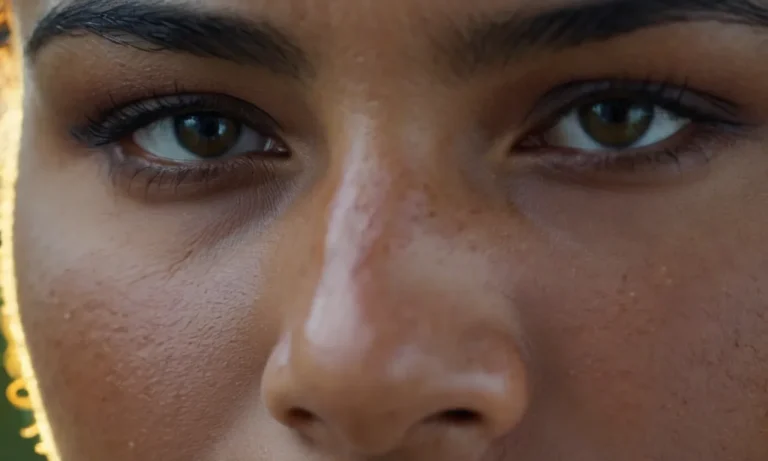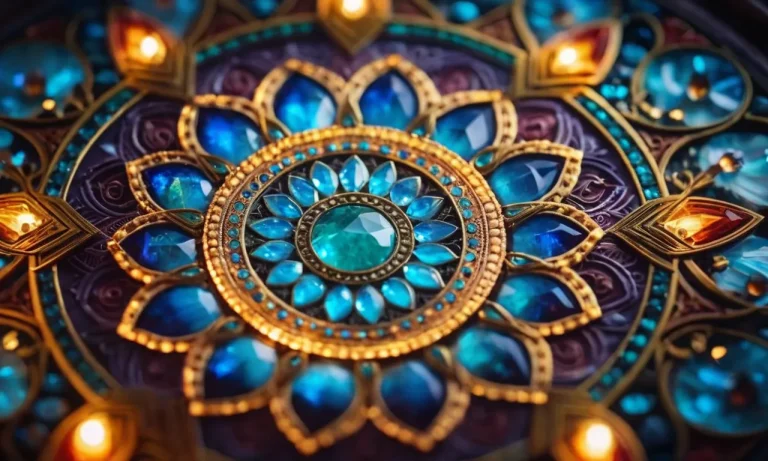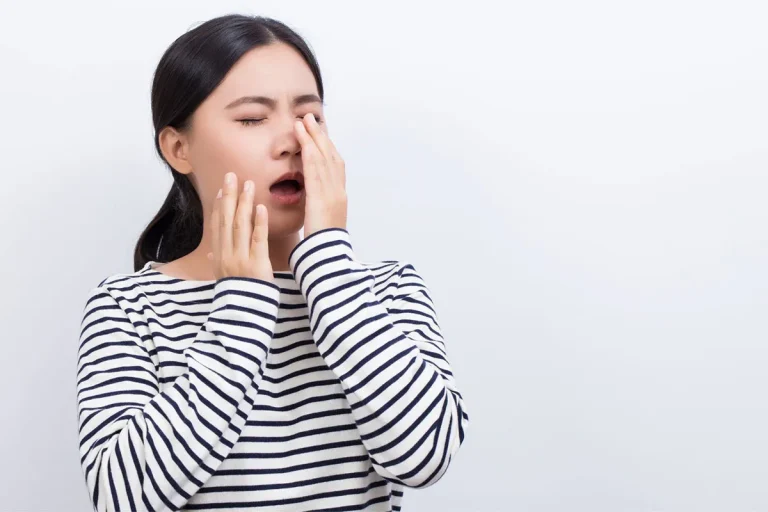If you’ve ever experienced an odd twitching sensation in your left cheek, you probably wondered what was causing it and if it’s something to worry about. Left cheek twitching can occur for a variety of reasons, some harmless and others more serious.
In this comprehensive guide, we’ll provide a quick overview of the possible causes of left cheek twitching and what it might mean if your left cheek is twitching.
We’ll cover various superstitions and folklore about left cheek twitching from different cultures around the world. We’ll also provide actionable advice for how to stop left cheek twitching through lifestyle changes, home remedies, and medical treatments.
By the end of this guide, you’ll understand the causes, meanings, and treatments for left cheek twitching so you can address it properly.
What Causes Left Cheek Twitching?
Left cheek twitching, also known as facial twitching, is a common phenomenon that can be caused by various factors. Understanding the underlying causes can help determine the appropriate treatment for this involuntary muscle movement.
Stress and Anxiety
One of the primary causes of left cheek twitching is stress and anxiety. When we are under immense pressure or experiencing heightened emotions, our muscles can become tense, leading to twitching in various parts of the body, including the face. This is often temporary and subsides once the stress or anxiety is alleviated. Finding healthy coping mechanisms and practicing relaxation techniques, such as deep breathing exercises or meditation, can help reduce stress levels and minimize the occurrence of cheek twitches.
Eye Strain
Another possible cause of left cheek twitching is eye strain. Excessive use of digital devices, reading in inadequate lighting conditions, or prolonged periods of focusing on a specific object can strain the muscles around the eyes. This strain can then extend to the muscles in the face, resulting in twitching. Taking regular breaks from screen time, ensuring proper lighting when reading, and practicing eye exercises can help prevent eye strain and reduce the likelihood of cheek twitching.
Nutrient Deficiencies
In some cases, left cheek twitching may be a sign of nutrient deficiencies. Lack of certain minerals, such as magnesium or potassium, can disrupt proper muscle function and lead to muscle spasms. Ensuring a balanced diet that includes foods rich in these essential nutrients, such as leafy greens, nuts, and bananas, can help prevent twitching caused by nutrient deficiencies.
Muscle Fatigue
When the muscles in the face are overworked or fatigued, they may twitch involuntarily. This can occur after excessive chewing, talking for extended periods, or engaging in activities that require repetitive facial movements. Taking breaks, practicing proper posture, and engaging in facial muscle relaxation exercises can help alleviate muscle fatigue and reduce cheek twitching.
Nerve Damage
In rare cases, left cheek twitching may be a symptom of nerve damage. Conditions such as Bell’s palsy or trigeminal neuralgia can affect the facial nerves, leading to muscle spasms and twitching. If left cheek twitching persists or is accompanied by other concerning symptoms, it is essential to consult a healthcare professional for a proper diagnosis and treatment.
It’s important to note that while left cheek twitching is usually harmless and temporary, if it becomes persistent or significantly affects your quality of life, it’s best to seek medical advice. A healthcare professional can help identify the underlying cause and recommend appropriate treatment options.
Superstitions and Folklore About Left Cheek Twitching
Left cheek twitching has been associated with various superstitions and folklore in different cultures around the world. These beliefs often stem from ancient traditions and have been passed down through generations. While there is no scientific evidence to support these superstitions, they continue to be deeply ingrained in certain cultures.
Chinese Face Reading
In Chinese face reading, left cheek twitching is believed to be a sign of good luck and fortune. It is believed that when the left cheek twitches, it is an indication that the person will receive unexpected wealth or good news. This belief is rooted in the idea that different parts of the face are connected to various aspects of life, including luck and fortune.
Indian Culture
In Indian culture, left cheek twitching is often seen as a negative omen. It is believed that when the left cheek twitches, it is a sign that something bad is about to happen. This superstition is deeply rooted in the belief that the left side of the body is associated with negative energy. Many people in India take this superstition seriously and may take measures to ward off any potential negative effects.
Hawaiian Culture
In Hawaiian culture, left cheek twitching is believed to be a sign that someone is talking about you. It is thought that if your left cheek twitches, someone is saying something negative or spreading gossip about you. This belief is similar to the superstition of “ears burning,” where it is believed that if your ears are hot or burning, someone is speaking ill of you.
New Age Beliefs
In New Age beliefs, left cheek twitching is often associated with energy imbalances in the body. It is believed that when the left cheek twitches, it is a sign that there is an energetic blockage or disturbance in the body. This belief aligns with the idea that the body is made up of energy channels, and when there is an imbalance, it can manifest in physical symptoms such as twitching.
While these superstitions and folklore may be interesting to learn about, it is important to remember that they are not based on scientific evidence. Left cheek twitching is usually harmless and temporary, often caused by muscle fatigue or stress. If you experience persistent or bothersome twitching, it is always a good idea to consult with a medical professional to rule out any underlying medical conditions.
When Left Cheek Twitching May Indicate a Serious Condition
While cheek twitching is often harmless and temporary, in some cases it may be a sign of an underlying health condition that requires medical attention. Here are some serious conditions that may cause left cheek twitching:
Bell’s Palsy
Bell’s Palsy is a condition that affects the facial nerves, causing sudden paralysis or weakness on one side of the face. Left cheek twitching can be an early sign of Bell’s Palsy, and it may be accompanied by other symptoms such as drooping of the mouth or difficulty closing the eye on the affected side. If you experience these symptoms, it is important to consult a healthcare professional for proper diagnosis and treatment.
Stroke
Left cheek twitching can also be a symptom of a stroke, a medical emergency that occurs when the blood supply to the brain is interrupted. Other signs of a stroke include sudden weakness or numbness on one side of the body, difficulty speaking or understanding speech, and severe headache. If you suspect that you or someone else may be having a stroke, call emergency services immediately.
Parkinson’s Disease
Parkinson’s Disease is a neurodegenerative disorder that primarily affects movement. While left cheek twitching alone is unlikely to be a sole indicator of Parkinson’s, it can be one of the early symptoms of the condition. Parkinson’s is characterized by tremors, stiffness, and difficulty with balance and coordination. If you notice left cheek twitching along with other Parkinson’s symptoms, it is important to seek medical advice for further evaluation.
Multiple Sclerosis
Multiple Sclerosis (MS) is a chronic autoimmune disease that affects the central nervous system. Left cheek twitching can occasionally be a symptom of MS, along with other neurological symptoms such as muscle weakness, tingling, and difficulty with coordination. If you suspect you may have MS, it is crucial to consult a healthcare professional for a proper diagnosis and appropriate treatment.
Myokymia
Myokymia refers to the involuntary twitching or quivering of a muscle, and it can affect any part of the body, including the cheeks. While myokymia is usually harmless and temporary, it can sometimes be a sign of an underlying neurological condition. If left cheek twitching persists or is accompanied by other concerning symptoms, it is advisable to seek medical advice for further evaluation.
It is important to note that only a healthcare professional can provide an accurate diagnosis based on your specific symptoms and medical history. If you are experiencing left cheek twitching or any other concerning symptoms, it is always best to consult a healthcare professional for proper evaluation and guidance.
Treatments and Home Remedies for Left Cheek Twitching
Warm Compress
One of the easiest and most effective ways to relieve left cheek twitching is by applying a warm compress to the affected area. The warmth helps to relax the muscles and reduce the frequency and intensity of the twitching. Simply soak a clean cloth in warm water, wring out the excess moisture, and gently place it on your left cheek for 10 to 15 minutes. Repeat this several times a day for best results.
Massage
Massaging the muscles around your left cheek can help alleviate twitching and promote relaxation. Using your fingertips, gently apply pressure in a circular motion on the affected area. You can also try using a warm oil, such as coconut or almond oil, during the massage to further relax the muscles. Massage for a few minutes each day to help reduce the frequency of left cheek twitching.
Stay Hydrated
Dehydration can sometimes trigger muscle twitches, including those in the cheek. It is important to ensure that you are adequately hydrated throughout the day. Aim to drink at least eight glasses of water daily, and consider incorporating hydrating foods, such as watermelon or cucumber, into your diet. Staying hydrated can help prevent left cheek twitching and promote overall muscle health.
Reduce Stress
Stress and anxiety are common triggers for muscle spasms and twitches, including left cheek twitching. Finding healthy ways to manage stress can help reduce the frequency and intensity of the twitches. Consider incorporating stress-reducing practices into your daily routine, such as deep breathing exercises, meditation, or engaging in activities that you enjoy. Taking care of your mental well-being can have a positive impact on your physical health as well.
Magnesium Supplements
Magnesium is an essential mineral that plays a role in muscle function and relaxation. If left cheek twitching persists or is accompanied by other symptoms, such as muscle cramps or spasms in other parts of the body, it may be worth considering magnesium supplements. Consult with your healthcare provider to determine the appropriate dosage and duration of supplementation. It is important to note that supplements should be used as directed and in conjunction with a balanced diet.
Remember, left cheek twitching is often harmless and typically resolves on its own. However, if the twitching persists or is accompanied by other concerning symptoms, it is advisable to consult with a healthcare professional for further evaluation and guidance.
Conclusion
Left cheek twitching is generally harmless but can be annoying and worrying. With a myriad of possible causes ranging from anxiety to nerve damage, it’s important to identify the underlying reason for your cheek twitching.
While superstitions provide interesting perspectives, don’t let them scare you unnecessarily. Most cases of left cheek twitching can be managed with home remedies and lifestyle changes. But see your doctor if it persists or indicates a more serious condition.
Hopefully this guide gave you a thorough overview of the causes, meanings, and treatments for left cheek twitching. With the right insights, you can address cheek twitching properly and prevent it from recurring.






